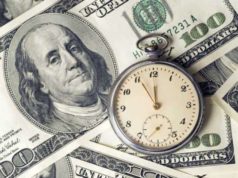
In a troubling development for the U.S. economy, recent reports indicate a significant surge in new jobless claims, raising alarms among economists and policymakers alike. This increase, which has been observed over the past few weeks, suggests that the labor market is facing challenges that could have far-reaching implications. As businesses grapple with various pressures, understanding the underlying factors contributing to this rise in unemployment claims is crucial for assessing the overall economic landscape.
Understanding the Recent Surge in New Jobless Claims: Key Statistics and Trends
The latest data from the Labor Department reveals that initial jobless claims have surged to levels not seen since the height of the pandemic. For the week ending recently, claims rose by 20,000 to a total of 320,000, surpassing analysts’ expectations. This marks a notable increase from the previous month, where claims hovered around 300,000. The four-week moving average, which smooths out weekly volatility, also climbed, indicating a persistent trend rather than a temporary spike. These statistics underscore a worrying shift in the labor market, prompting concerns about the sustainability of the economic recovery that has been underway since the pandemic’s peak.
Analyzing the Factors Behind the Increase in Jobless Claims: Economic Implications
Several factors are contributing to the rise in jobless claims, including inflationary pressures, supply chain disruptions, and shifts in consumer behavior. The ongoing inflation, which has reached levels not seen in decades, has forced many businesses to reevaluate their staffing needs. Higher operational costs and reduced consumer spending have led some companies to downsize or implement layoffs. Additionally, the lingering effects of the pandemic, including labor shortages in certain sectors, have created an environment where businesses are struggling to maintain their workforce. The cumulative impact of these factors raises concerns about the potential for a broader economic slowdown if the trend continues.
The Impact of Rising Jobless Claims on Consumer Confidence and Spending Habits
As jobless claims rise, consumer confidence is likely to take a hit, which could further exacerbate economic challenges. When individuals face uncertainty regarding their employment status, their willingness to spend diminishes. This reduction in consumer spending can create a ripple effect throughout the economy, as businesses may experience decreased revenues, leading to further layoffs or cutbacks. Surveys indicate that consumer sentiment has already begun to wane, with many expressing concerns about job security and the overall economic outlook. This decline in confidence could hinder the recovery process, making it imperative for policymakers to address the underlying issues driving unemployment.
Sector-Specific Insights: Which Industries Are Most Affected by Job Losses?
The surge in jobless claims has not affected all sectors equally; certain industries are bearing the brunt of the job losses. The hospitality and leisure sector, which was among the hardest hit during the pandemic, continues to struggle with staffing challenges and fluctuating demand. Additionally, the retail sector is experiencing significant layoffs as consumers shift their purchasing habits toward online shopping, leaving brick-and-mortar stores vulnerable. Manufacturing and construction industries are also facing job losses due to supply chain disruptions and rising material costs. Understanding these sector-specific dynamics is essential for developing targeted policy responses that can mitigate the impact of rising unemployment.
Policy Responses: What Measures Can Be Taken to Address Rising Unemployment?
In light of the recent surge in jobless claims, policymakers are urged to consider a range of measures aimed at stabilizing the labor market. Short-term solutions may include extending unemployment benefits to support those affected by layoffs, as well as providing incentives for businesses to retain employees during challenging economic conditions. Additionally, investing in workforce development programs can help equip workers with the skills needed for emerging job opportunities, particularly in sectors that are experiencing growth. Policymakers must also focus on addressing inflation and supply chain issues to create a more conducive environment for job creation and economic stability.
Future Projections: What the Surge in Jobless Claims Means for Economic Recovery
The recent increase in jobless claims poses significant challenges for the trajectory of economic recovery. If the trend continues, it could signal a slowdown in the overall recovery process, with potential implications for GDP growth and inflation rates. Economists warn that sustained high levels of unemployment could lead to a more prolonged economic downturn, as consumer spending and business investment may falter. However, if timely and effective policy interventions are implemented, there is potential for a rebound in the labor market. The coming months will be critical in determining whether the current surge in jobless claims is a temporary setback or a sign of deeper economic vulnerabilities.
The surge in new jobless claims serves as a stark warning for the economy, highlighting the fragility of the recovery process. As various sectors grapple with the implications of rising unemployment, it is essential for policymakers to take decisive action to address the underlying issues. By fostering an environment conducive to job creation and supporting those affected by layoffs, there is hope for a more robust economic recovery in the future. The coming weeks and months will be pivotal in shaping the labor market and the broader economic landscape, making vigilance and proactive measures paramount.























